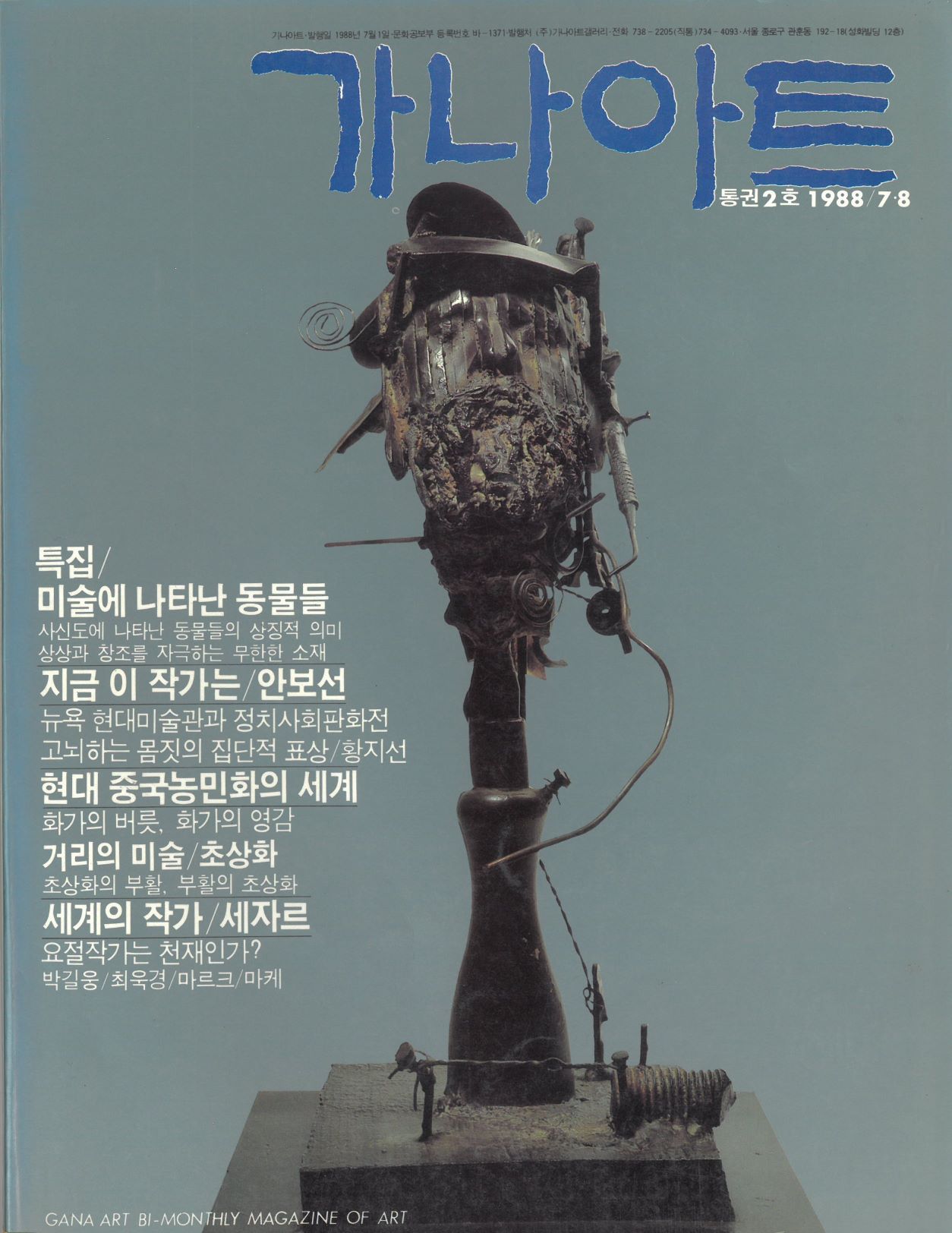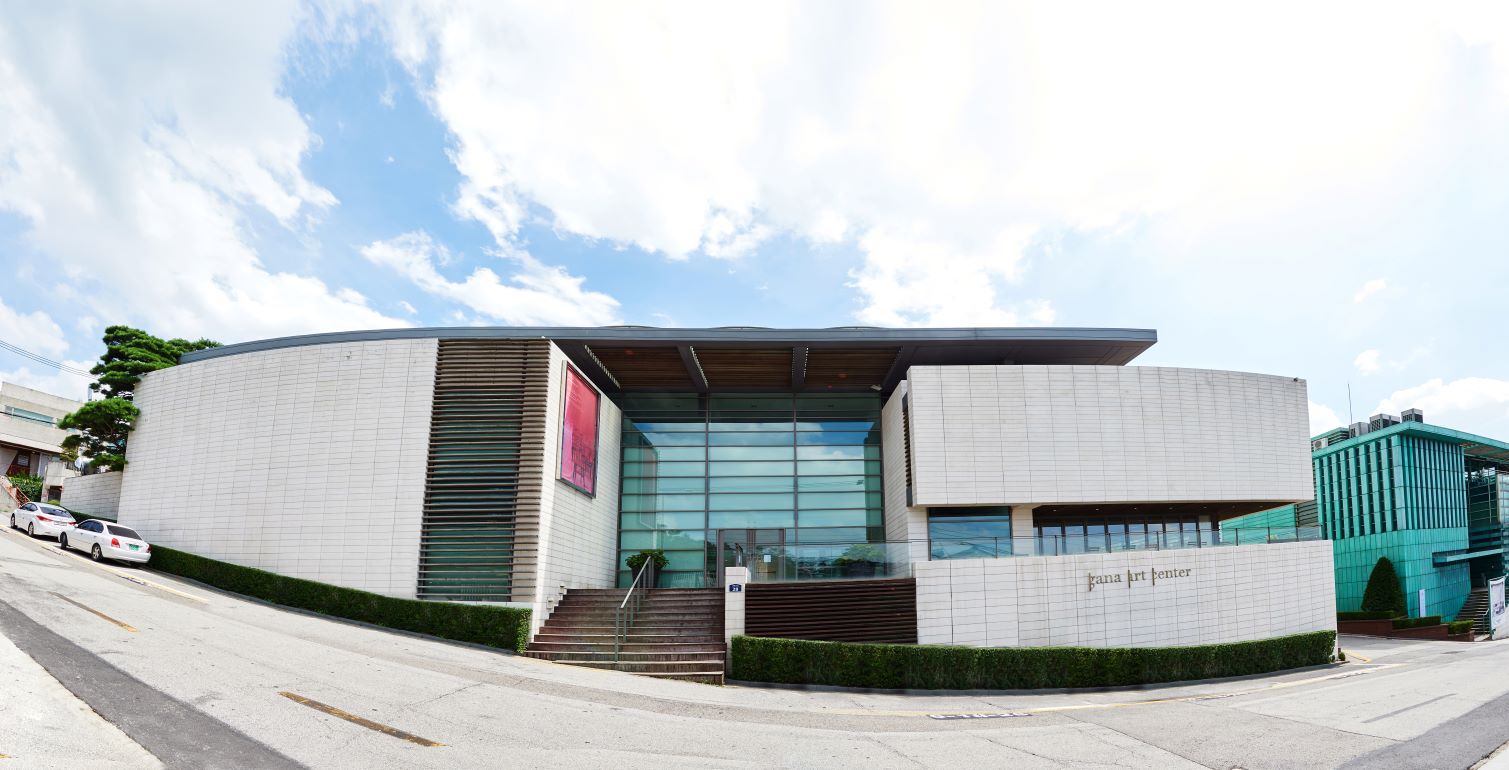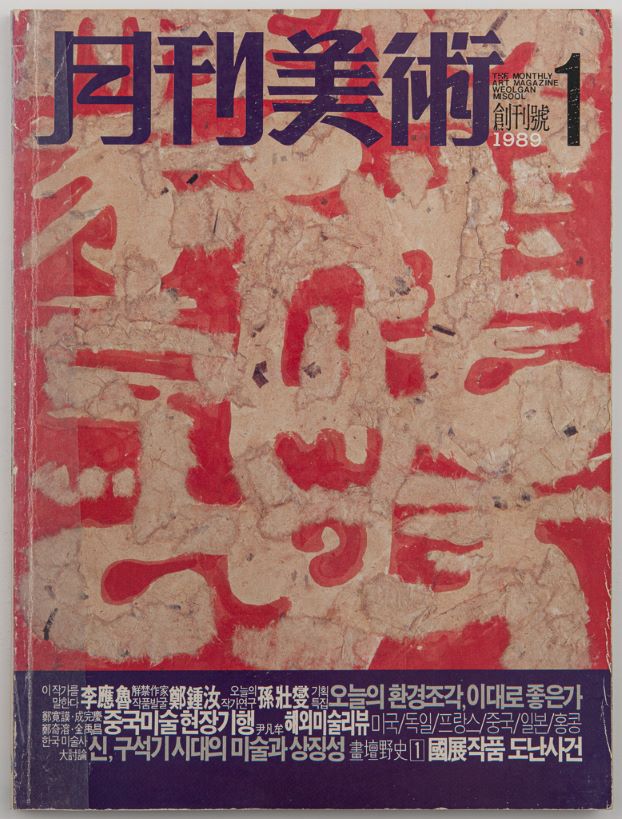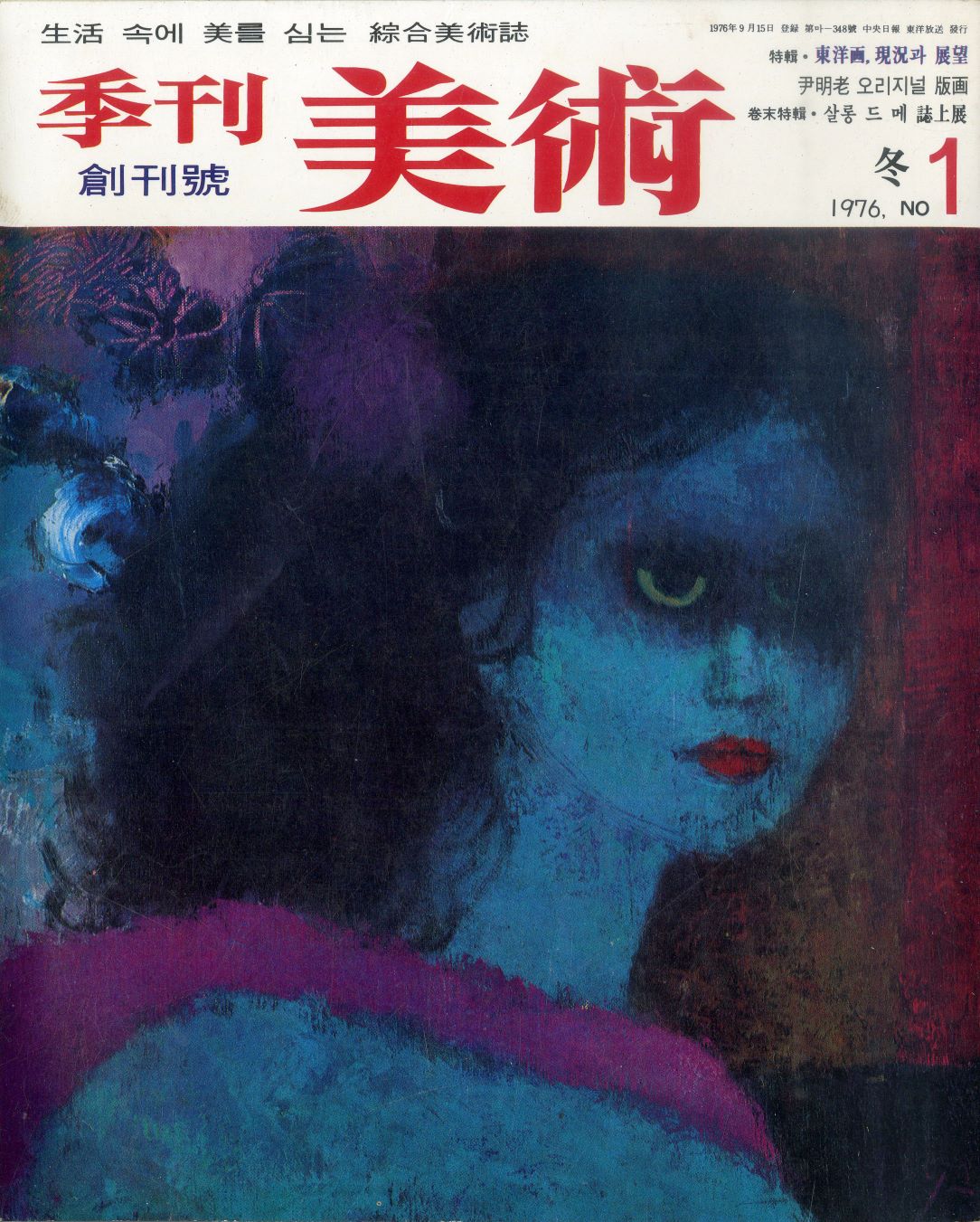
Gana Art, no.2. July/August 1988, ⓒ Gana Art
Gana Art
* Source: Multilingual Glossary of Korean Art by Korea Arts Management Service
Related
-

Gana Art Center
The successor to the Gana Gallery, which was established in 1983 in Gwanhun-dong, Seoul. In 1984, the gallery became the first in Korea to implement an in-house artist policy in Korea, and it actively supported numerous artists through the regular purchase of their work. The gallery held a diverse array of exhibitions in Korea and abroad, and established a residency in Paris, France, in 1993. In 2002 the gallery established the Gana Art Center in Pyeongchang-dong, and in 2006 also established an atelier in Yangju, Gyeonggi-do, which provided a studio space for artists. Then in 2008, the gallery established Gana Art New York. The art periodical Gana Art, published from 1988 to 2000 by the Gallery, featured numerous articles on Minjung Art, art in developing countries, and antique art, as well as interviews with artists and critics.
-

Minjung Art
An artistic movement that came to prominence alongside Korea’s democratization movement in the 1980s. Minjung artists often sought to critically portray the violent repression and corruption of the military dictatorship, to represent the experiences of laborers and farmers, and to achieve social change through art. In contrast to abstraction, which constituted the mainstream of 1970s art in Korea, Minjung Art is notable for the use of representational and figurative forms. One possible point of origin for Minjung Art is Oh Yoon’s work in the Reality Group (Hyeonsil dongin). The group was formed in 1969 by Kim Ji-ha, Oh Yoon, and Lim Se-taek. A variety of Minjung art groups were established, including the Reality and Utterance (Hyunsilgwa bareon) in 1979 by Kim Jungheun, Oh Yoon, Joo Jae-hwan, art critic Sung Wan-kyung, and Choi Min, the Gwangju Freedom Artist Association (Gwangju jayu misulin hyeopuihoe) in 1979 by Hong Sungdam and Choi Youl, the Imsulnyeon (The Year Imsul) in 1982, and the Dureong in 1983. These groups all commonly critiqued Western capitalism. In terms of form, Minjung artists adopted traditional and ethnic folk modes of expression using diverse media such as collage, printmaking, oil painting, and photography. Following the 15 Years of Korean Minjoong Arts: 1980-1994 Exhibition at the National Museum of Modern and Contemporary Art, Minjung Art became an accepted part of Korean art history. Overseas, Minjung Art has also become a recognized term that describes this genre and its unique focus on the political and social history of Korea.
Find More
-

Wolgan Misool
Wolgan Misool (Monthly Art Magazine) is an art magazine founded in January 1989 by the JoongAng Ilbo Press. Gyegan Misul, its forerunner, was originally founded in 1976 by the JoongAng Ilbo Press, and was originally a quarterly art magazine, Then when it became a monthly in 1988 it was renamed to Wolgan Misool. Emphasizing its editorial focus as “a magazine as a guide for a wide range of readers living in pursuit of beauty,” it aims to serve as a popular magazine that not only provides art focused content for art experts but also for ordinary readers. Their major works include a special series, Discussions on Korean Art History, published over two years in 23 articles, which promoted extensive art history discussions and issues ranging from ancient to modern Korean art. Through the Discovering Unbanned Artists series, the magazine attempted to shed light on artists who defected from North Korea and contributed to modern Korean art history. It also runs a publishing business that produces art-related books, an art catalogue, culture, and arts magazines for companies, and provides an artist directory on its website.
-

Gyegan Misool
An art magazine first published in 1976 by the publishing arm of JoongAng Ilbo. Until 1988, the magazine was published on a quarterly basis. Then, from January 1989, the magazine has been published on a monthly basis, and the title was changed to Wolgan Misool. Wolgan Misool Co., Ltd. was established in 1997, and it publishes Wolgan misool to the present day. Of the numerous art magazines created during the mid-to-late 1970s, a growth period for the art market, Wolgan Misool boasted the strongest finances and longevity, and it heavily influenced the production and consumption of Korean art. Prominent critics, art historians, and writers all wrote for the magazine, including You Hongjune, Youn Bummo, Lee Youngchul, Ahn Kyuchul, Lee Tae-ho, and Kim Boggi. Starting with Chusa Kim Jeonghui in 1985, Gyegan Misool published a series of 24 art catalogues titled The Aesthetics of Korea, which was the first compilation of Korean antique art and relics.






